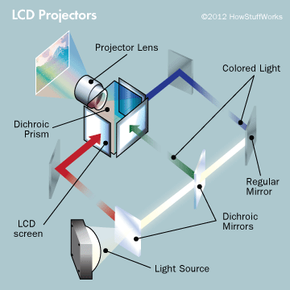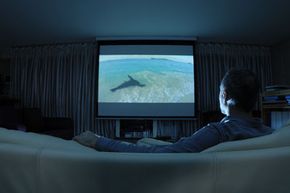Whether suffering through a business pitch or a classroom presentation or enjoying an evening of home theater blockbuster thrills, there's a good chance an LCD (liquid crystal display) projector is responsible for the light show.
The technology behind the LCD projector is nearly three decades old in 2012, but it remains one of the top digital projection technologies, alongside Digital Light Processing (DLP) projectors. Inventor Gene Dolgoff developed the first LCD projector in 1984, and both Epson and Sony continue to employ the technology in 21st century projectors.
Advertisement
The old method of film projection was simple: Each frame of the film was a tiny, translucent photograph. Shine light through the film and then have that light pass through an imaging lens and you'd display a larger version of that tiny image onto a wall or screen.
LCD projectors work a little differently. A beam of high-intensity light travels through thousands of shifting pixels in an LCD display instead of through a frame of translucent film. And these projectors don't just use a single LCD display either -- they use three, which is why they're also called 3LCD projectors. The light splits into three hues, then travels through three LCDs before recombining in a prism to generate the crisp, colorful image projected on the screen.
Still sound like magic? Well, let's walk through the process at a slower pace, beginning with the lamp and ending on the big screen.
So grab your popcorn. Settle back in your seat. Turn off your phone and prepare to break some light.
Advertisement





